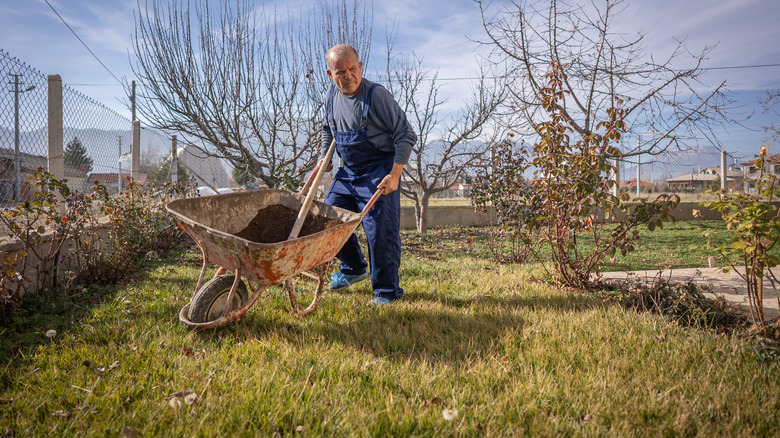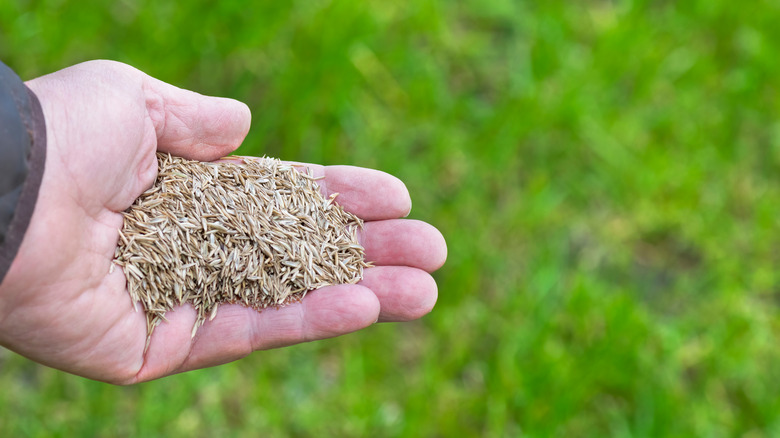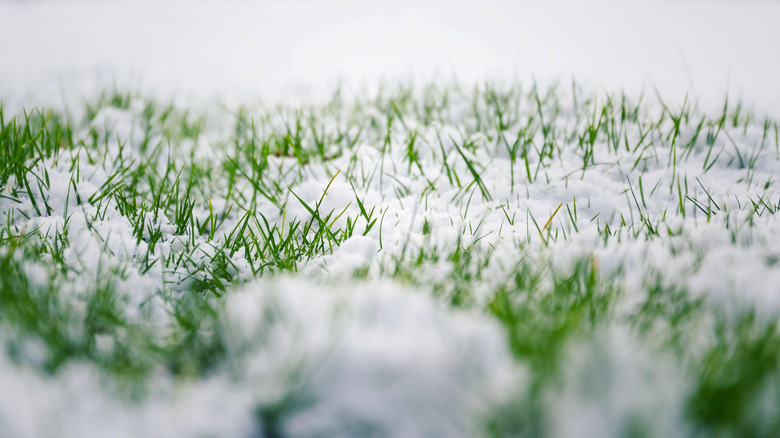Laying Grass Seed After The First Frost: Myth Or Fact?
When you want to successfully reseed your lawn because of bare spots or weak grass plants, autumn is the most common time to do this job. After summer, you can clearly see where the yard needs a boost from some new growth, making it easier to strengthen areas that need it. It's also a great time to utilize the best overseeding techniques on your lawn, as most weeds are going dormant, meaning the new grass plants have a clear path to strong growth. But what if you decide to start the job late in the autumn? Does waiting until near or after the first frost make it impossible to allow the new seed to germinate properly?
You'll find a wide range of advice on this subject. The consensus is that you should give yourself plenty of time before the first frost to give the new plants time to establish themselves unless you are hoping to lay seeds that won't germinate until the following spring. The key is to avoid planting at a time when frost is imminent. Young grass sprouts are unlikely to survive frost and hard freezes.
These below-freezing temperatures aren't going to kill or affect the actual seeds, so you can potentially apply them at a time when they won't sprout and put the young shoots in danger of freezing and dying. As long as they haven't sprouted, the seeds may sit dormant after the frost begins and until the next growing season arrives.
When is the best time to overseed in the autumn?
Many state and local extension offices recommend overseeding in the fall, around 45 days before you expect to see the first frost. This gives the new sprouts time to establish themselves before the freezing temperatures can harm them to the point where they will not survive the winter. Through an internet search, you can find maps that show when the first frost typically occurs in your location. Certainly, it's possible you could have an early or late freeze in any particular year, but using these maps can give you an idea of when to expect it.
The 45-day window for planting gives you some leeway in case you have an early frost as well. Typically, new grass plants in your lawn require seven to 21 days to emerge and another couple of weeks to strengthen.
Within the 45-day window, you should take several steps to give the new seeds the best chance at sprouting and growing strong. Start by watering the area where you will be planting before you start. This creates ideal conditions for sprouting. You can continue to apply water until you have your first freeze. (Just be sure to detach your hoses before the cold temperatures to protect your outside faucet from freezing in the winter.) You also can add some fertilizer in the fall that's safe for new grass plants to give them the nutrients they need to establish themselves before winter.
What is dormant grass seeding and how do you do it?
If you must plant grass around the time of your expected first frost — or after it — you have an option called dormant seeding. This process allows you to do your lawn's preparation work for overseeding in the autumn, perhaps when you have less landscaping work to do, rather than in the spring, when you may be busier. Kansas State University research shows that dormant seeding can yield good results, although planting or overseeding in the autumn 45 days before the expected first frost is the better option.
Ideally, the new grass seed would sit dormant in the ground throughout the winter until the soil becomes warm enough to support the growth of the new sprouts in the spring. Additionally, by having it already in the ground at the time warmer weather occurs, the new grass plants are able to establish themselves before weeds begin growing vigorously. The grass can establish itself strongly before the hot summer weather arrives and begins stressing the turf.
You must be careful not to start dormant seeding too early, or the sprouts may begin growing just before the first frost, almost certainly killing them. Start the dormant planting at a time when the ground is not completely frozen but when soil temperatures are still consistently cold enough to prevent seeds from germinating. If they can sit underneath several inches of snow most of the winter, it's even more helpful.



